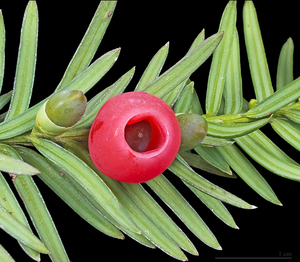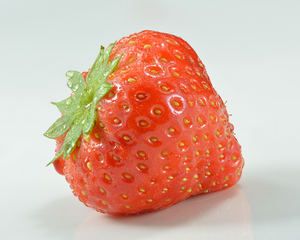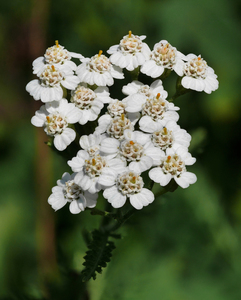Permaculture companion plants for Northern Highbush Blueberry
Back to Northern Highbush Blueberry
| Image | Name | Data | Description | Actions |
|---|---|---|---|---|

|
Taxus baccata |
https://en.wikipedia.org/wiki/Taxus_baccata
true
Slow
Dry, Moist
Full sun, Partial sun/shade, Full shade
5-7
Tall trees
English yew, common yew
Light (sandy), Medium, Heavy (clay)
Taxaceae
15.0
Eibe
Fruit
Evergreen
https://pfaf.org/User/Plant.aspx?LatinName=Taxus baccata
Albania, Algeria, Austria, Azores, Baleares, Baltic States, Belarus, Belgium, Bulgaria, Central European Rus, Corse, Czechoslovakia, Denmark, East European Russia, Finland, France, Germany, Great Britain, Greece, Hungary, Iran, Ireland, Italy, Kriti, Krym, Morocco, Netherlands, North Caucasus, North European Russi, Northwest European R, Norway, Poland, Portugal, Romania, Sardegna, Sicilia, South European Russi, Spain, Sweden, Switzerland, Transcaucasus, Turkey, Turkey-in-Europe, Ukraine, Yugoslavia
Madeira, New York
https://powo.science.kew.org/taxon/urn:lsid:ipni.org:names:306036-2
Tea
Fire starter, Hedgerow, Fragrance, Pest control, Lumber, Espalier, Ground cover
|
Show
Edit |
|

|
Strawberry |
4-8
Perennial
Full sun, Partial sun/shade
Moist
Light (sandy), Medium, Heavy (clay)
0.3
Herbs
Ground cover
True
Fruit, Leaves
https://en.wikipedia.org/wiki/Strawberry
Rosaceae
Erdbeere
https://pfaf.org/User/Plant.aspx?LatinName=Fragaria x ananassa
Aardbei
Jordbær
British Columbia, California, Oregon, Washington
Albania, Baltic States, Belarus, Central European Rus, Denmark, East European Russia, El Salvador, Finland, France, Germany, Great Britain, Guatemala, Honduras, Illinois, Ireland, Italy, Japan, Korea, Netherlands, New York, North European Russi, Northwest European R, Norway, Pitcairn Is., South European Russi, Sweden, Switzerland, Tadzhikistan, Turkey, Turkmenistan, Vermont
0.3
https://powo.science.kew.org/taxon/urn:lsid:ipni.org:names:30117681-2
|
Strawberry (Fragaria × ananassa) is a popular fruit-bearing plant that is native to parts of the Americas, Europe, and Asia. It is a member of the Rosaceae family and is closely related to other fruit-bearing plants such as raspberries and blackberries. The plant has a low-growing, spreading habit, with leaves that are typically green and glossy, and white flowers that give way to red, juicy berries. The fruits are edible and are often eaten fresh, used in jams and jellies, or baked in desserts. Strawberry plants prefer well-draining, moist soil and plenty of sunlight. They can be grown in a variety of climates, but they tend to thrive in temperate regions with cool summers and mild winters. To cultivate the plants successfully, a grower may need to provide adequate irrigation, fertilizer, and pest control. One of the distinctive features of strawberry plants is their runners, which are long, slender stems that grow horizontally along the ground. These runners can be used to propagate new plants, which can be grown in rows or beds to form a dense, ground-covering mat. In addition to their value as a food source, strawberry plants are also prized for their attractiveness to pollinators and other beneficial insects. They are often used in home gardens and on small farms as a way to attract bees, butterflies, and other insects that help to pollinate other plants. Overall, strawberries are a versatile and valuable plant that is prized by gardeners and farmers alike for their delicious fruit and their ability to attract wildlife. |
Show
Edit |

|
Yarrow |
4-8
Perennial
Full sun, Partial sun/shade
Dry, Moist
Light (sandy), Medium, Heavy (clay)
0.6
Herbs
true
Leaves
https://en.wikipedia.org/wiki/Achillea_millefolium
Fast
Boreal yarrow, california yarrow, giant yarrow, coast yarrow, western yarrow, pacific yarrow, bloodwort, carpenter's weed, common yarrow, hierba de las cortaduras, milfoil, plumajillo
Asteraceae or compositae
Gemeine schafgarbe
Weed potential
https://pfaf.org/User/Plant.aspx?LatinName=Achillea millefolium
0.2
Afghanistan, Alabama, Alaska, Albania, Alberta, Altay, Amur, Arizona, Arkansas, Austria, Baltic States, Belarus, Belgium, British Columbia, Bulgaria, Buryatiya, California, Central European Rus, Chita, Colorado, Connecticut, Czechoslovakia, Delaware, Denmark, District of Columbia, East European Russia, East Himalaya, Finland, Florida, France, Føroyar, Georgia, Germany, Great Britain, Greece, Greenland, Guatemala, Hungary, Iceland, Idaho, Illinois, Indiana, Iowa, Iran, Iraq, Ireland, Irkutsk, Italy, Kamchatka, Kansas, Kazakhstan, Kentucky, Khabarovsk, Kirgizstan, Krasnoyarsk, Krym, Kuril Is., Labrador, Lebanon-Syria, Louisiana, Magadan, Maine, Manitoba, Maryland, Massachusetts, Mexico Central, Mexico Gulf, Mexico Northeast, Mexico Northwest, Mexico Southeast, Mexico Southwest, Michigan, Minnesota, Mississippi, Missouri, Mongolia, Montana, Nebraska, Netherlands, Nevada, New Brunswick, New Hampshire, New Jersey, New Mexico, New York, Newfoundland, North Carolina, North Caucasus, North Dakota, North European Russi, Northwest European R, Northwest Territorie, Norway, Nova Scotia, Nunavut, Ohio, Oklahoma, Ontario, Oregon, Pakistan, Pennsylvania, Poland, Portugal, Primorye, Prince Edward I., Québec, Rhode I., Romania, Sakhalin, Sardegna, Saskatchewan, Sicilia, South Carolina, South Dakota, South European Russi, Spain, Sweden, Switzerland, Tadzhikistan, Tennessee, Texas, Transcaucasus, Turkey, Turkey-in-Europe, Turkmenistan, Tuva, Ukraine, Utah, Uzbekistan, Vermont, Virginia, Washington, West Himalaya, West Siberia, West Virginia, Wisconsin, Wyoming, Yakutskiya, Yugoslavia, Yukon
Antipodean Is., Argentina Northeast, Argentina Northwest, Argentina South, Azores, Baleares, Bolivia, Borneo, Botswana, Brazil North, Brazil Northeast, Brazil South, Brazil Southeast, Brazil West-Central, Cameroon, Cape Provinces, Chatham Is., Chile Central, Chile North, Chile South, Colombia, Corse, Costa Rica, Cuba, Cyprus, Dominican Republic, Ecuador, Falkland Is., Free State, Haiti, Hawaii, Honduras, India, Inner Mongolia, Jamaica, Japan, Jawa, Korea, KwaZulu-Natal, Lesotho, Madeira, Malaya, Namibia, New South Wales, New Zealand North, New Zealand South, Nicaragua, Northern Provinces, Northern Territory, Paraguay, Peru, Philippines, Queensland, South Australia, South Georgia, Sulawesi, Sumatera, Taiwan, Tasmania, Uruguay, Victoria, Vietnam, Western Australia, Xinjiang, Zimbabwe
https://powo.science.kew.org/taxon/urn:lsid:ipni.org:names:2294-2
Condiment, Tea
Companion, Compost, Cosmetic, Dye, Essential Oil, Hair, Animal feed, Dynamic accumulator, Ground cover, Fragrance
|
Yarrow (Achillea millefolium) is a perennial plant that is native to temperate regions of the Northern Hemisphere, including Europe, Asia, and North America. It is commonly found in meadows, grasslands, and along roadsides. Yarrow has fern-like leaves that are divided into many narrow, tooth-like segments. The leaves are typically dark green in color and grow in a basal rosette. The plant produces small, white or pink flowers that are arranged in compact, flat-topped clusters. The flowers are attractive to pollinators such as bees and butterflies. Yarrow typically grows to a height of 30-90 cm (12-36 in) and has a spreading habit. It is a fast-growing plant that can quickly colonize an area through its rhizomatous root system. Yarrow is often differentiated from similar plants by its strongly scented leaves and its distinctive flower clusters. Yarrow prefers well-drained soils and full sun to partial shade. It is drought-tolerant and can grow in a variety of soil types, including sandy, loamy, and clay soils. To cultivate yarrow successfully, it is important to space the plants adequately to allow for good air circulation and to prevent the spread of diseases. Yarrow can also be propagated through dividing the root crowns or by planting seeds. Some parts of yarrow, such as the leaves and flowers, are edible and can be used in salads or as a garnish. The leaves have a slightly bitter, astringent flavor and can be used fresh or dried. The flowers can also be used to make tea. It is important to note that some people may experience allergic reactions to yarrow, so it is best to try a small amount first before consuming it in larger quantities. Yarrow has a long history of use in traditional medicine, where it has been used to treat a wide range of ailments, including wounds, infections, and fevers. It is also believed to have anti-inflammatory and astringent properties. In the garden, yarrow can be used as a natural insect repellent, as a mulch to suppress weeds, and as a companion plant to improve the health and vigor of other plants. Yarrow is valuable to wildlife as a nectar and pollen source for pollinators. It also provides shelter and habitat for beneficial insects, such as ladybugs and lacewings, which help to control pest populations in the garden. Overall, yarrow is a versatile and useful plant that can add beauty and functionality to a garden or farm. |
Show
Edit |